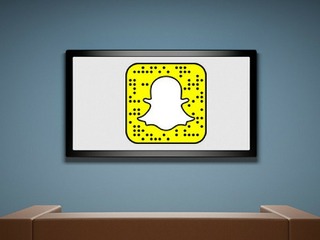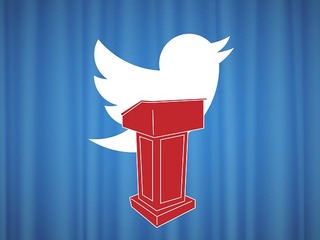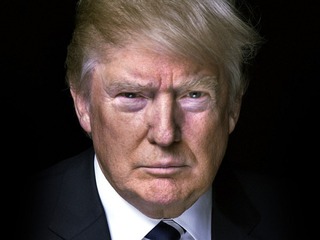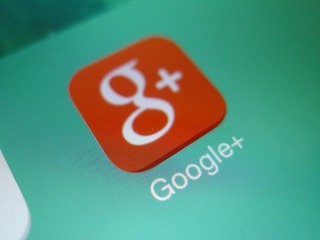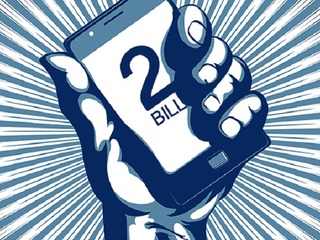The FDA outlines draft guidance on AI for medical devices
The agency also published draft guidance on the use of AI in drug development
Read more...
2017 was the year that Facebook officially won the social wars. With Snap going public, and all but imploding, it seems like all competitors to the site's dominance have, for now, been vanquished.
Yet, despite that good news, it was also a tough year for Facebook, as it dealt with the fallout from the fake news scandals of 2016, got scorched by some of its own former employees and even saw itself get hauled in front of the United States Congress to answer questions about how it plans to prevent future meddling from foreign powers.
Twitter, meanwhile, saw a bit of a resurgence, thanks, in no small part, to becoming a near daily part of the national conversation.
Those three companies made up the vast majority of the top 10 social media stories of 2017:
1. Congress goes after social media over Russian meddling
The fallout from the fake news scandal that engulfed Facebook at the end of 2016 actually somehow got worse this past year, when it was revealed that Russians had used the platform to try to interfere in the 2016 election by swaying public opinion through fake ads centered around social issues, including gay marriage and gun control.
The fact that Russians had bought $100,000 in ads on Facebook, and had payed for them in Russian rubles, made Facebook look inept at best, complicit at worst.
As a result of these disclosures, Facebook, Twitter and Google, were all grilled by U.S. lawmakers about how they allowed this to happen, especially when it seems like the Russians were barely trying to hide what they were doing. Of all three companies it was Facebook that, not surprisingly, took the most heat.
Since then, Facebook has made a few moves toward cracking down on fake posts, changing the way it notifies users that something is false, getting ride Disputed Flags in favor of Related Articles to help give people more context about the story. The company is also allowing its users to check to see if they like or follow any pages created by Russians.
Social media, and Facebook in particular, need to really do something about this issue, and they need to make sure they do it before the 2020 election happens, because this story is not going away any time soon.
2. Trump makes Twitter relevant again
After Donald Trump used Twitter to help get himself elected President of the United States, the next question was, would that help or hurt the company going forward?
One of two things was going to happen: either Trump's continued tweeting as President would drive more people to the network, as more people want to stay on top of what's happening, or he could potentially drive users away, especially since polls have shown that people don't approve of the President's Twitter use.
A year later, it's clear that the first scenario won out. Trump has made Twitter relevant in a way that it hasn't been in years (no surprise that the company has altered its rules about abuse on the platform so they specifically don't apply to Trump's account; it isn;t going after the golden goose). Twitter even managed to add users in the third quarter of this year, growing 4 percent year-to-year, something the company has struggled to do for a long time. While it's hard to say what exactly is behind that growth, the fact that so much breaking news now happens on Twitter certainly couldn't have hurt.
It was only a year ago that Twitter couldn't find anyone to buy it; now the company is seeing an uptick, but the reality is that it's likely temporary. What happens to Twitter once Donald Trump is no longer President? Perhaps the company should strike while the iron is still hot and see who may be once again interested in buying it while Trump is still in office.
3. Snap goes public…and it’s kind of a disaster
While being forced to defend itself in front of Congress was not a good look for Facebook, make no mistake, the company is stronger than ever, especially now that it's foremost rival, the company that so many predicted would eventually take it down, had a really bruising year.
That would be Snap, the company that had its much anticipated debut on the public market in March, soaring 40 percent on its first day. Just two months later the company had its first earnings report, and it quickly crashed right back down to Earth. Snap fell short on revenue and EPS and in terms of user growth. The biggest problem, though, was a staggering $2.2 billion in losses, up from just $104 million in the same quarter the year before. It saw an increase of over 2,000 percent in just a year.
Snap's stock fell 24 percent and still hasn't recovered; its now trading at $14.86 a share, down 12.5 percent from its $17 IPO price. The stock has done so poorly, in fact, that the company is being partially blamed for a lackluster tech IPO market in the third quarter of this year. It also be one of the reasons that another highly anticipated social IPO doesn't look like it's happening any time soon.
4. Facebook's stock hits all time high
While Snap's stock was floundering, Facebook's was doing the exact opposite: in the beginning of November, the company's stock closed at an all time high of $182.66.
In fact, many tech stocks are up this year with companies such as Apple, Alphabet and Amazon all hitting record highs last month as well. This happening as the economy continues to improve, with the unemployment rate staying steady at 4.1 percent, the lowest it's been since 2000, and the stock market doing better than any time in history. The Dow Jones has hit 86 new record closing highs since the 2016 presidential election.
5. Microsoft resists integrating LinkedIn
Last year, one of the biggest stories in social was the acquisition of LinkedIn by Microsoft for $26.2 billion, the largest acquisition in social media history, over $4 billion more than Facebook paid for WhatsApp.
There was a lot of speculation about why Microsoft wanted LinkedIn, and what it would do with the company and its treasure trove of data, so you'd be forgiven if you thought that there would be massive news coming out about this new partnership. Yet, it was exactly the opposite. You may have even forgotten that Microsoft made the acquisition.
It wasn't until September that Microsoft announced that it would be integrating LinkedIn into its Office products, which is what the company had outlined all the way back in December of last year. So if you're using Office 365, LinkedIn information will be accessible directly from there. In November, LinkedIn was integrated into Microsoft Word to make it easier for users to write their resumes.
Marc Benioff was so afraid of the power of Microsoft and LinkedIn together that Salesforce, along with other companies, actually filed a complaint in Europe over Microsoft using LinkedIn "as a competitive weapon against other software companies." Yet, so far, nothing remotely like that has come to pass.
Still, there's no way that Microsoft spent that much money not to take full advantage of all that LinkedIn data. Maybe 2018 will be the year that Microsoft finally makes its big push.
6. Snap Spectacles crash and burn
Not only did Snap have to spent 2017 learning some hard lessons about being a public company, it has also had to deal with the difficulties of being a hardware company as well.
In September of last year, Snapchat announced that it was changing its name to Snap Inc, and that it was launching a new product called Spectacles, sunglasses with an integrated video camera that makes it easy to create Memories. They began showing up in pop-up shops around the country, and they gained the kind of traction and buzz that Google Glass had, without any of the blowback that the previous device had experienced.
Then, as it so often happens with hardware, things didn't ultimately turn out so well.
In its third quarter earnings report, Snap revealed that it lost almost $40 million on the device "primarily related to excess inventory reserves and inventory purchase commitment cancellation charges." According to TechCrunch, less than one tenth of one percent of all Snap users actually wound up buying a pair of spectacles.
Creating and maintaining a hardware company is extremely difficult, as even companies with room to play, like Google and Microsoft, have learned. It's not clear whether Snap will use this opportunity to refocus on its core app, or to try again with a new hardware device.
7. Facebook passes 2 billion MAUs
Along with its stock performance, Facebook also hit another major milestone this year, passing 2 billion monthly active users in June. That gave the company more users than China, the highest populated country on the planet, as well as more users than all the other social media platforms combined.
For reference, two billion is also more than all the trees planted in America every year, the total number of dogs and cat combined, minutes in a millennium, and inches around the circumference of the Earth.
Even with the whole fake news/Russia scandal, Facebook is pretty much too big to fail at this point.
8. Forget live video, scripted content is where it’s at!
2016 was the year social embraced live video, but these networks are not known for resting on their laurels. They are always looking to the future, to the next big thing. For Facebook and Snap, that's scripted television.
In August, Facebook debuted a Watch tab for its users to find original content from its publishing partners, with categories that included “Most Talked About,” “What’s Making People Laugh” and “Shows Your Friends Are Watching.” Facebook also revealed that it funded some of the shows.
Snap went even further, actually partnering with NBCUniversal to create a digital content studio based in Santa Monica. Together, the two companies will develop new scripted shows that will "primarily debut" on Snapchat. The studio will be headed by Chief Content Officer Lauren Anderson.
In conjunction with the launch, the new studio revealed that its first shows will be done in conjunction with Donut Studios, the creative shop from Mark and Jay Duplass, whose shows include Togetherness and Room 104, both of which air on HBO.
There are pitfalls that come with this type of launch, namely the cost. Remember Yahoo's foray into original programming? Its turned out to be a disaster, as it was forced to take a $42 million write-off on its shows. Then there's Netflix, which had $2.8 billion in revenue in its second quarter, but the company only walked away with a net income of $129 million thanks to the cost of creating all of its original content.
Hopefully, for Snap's sake, this goes better than its attempt to be a hardware company.
9. Twitter goes beyond 140 characters
This year, Twitter did something that, at one point, would have been unthinkable: it doubled its 140 character count! Now you can rant, and say something potentially stupid and career threatening, in 280 characters instead.
This is a move that has been a long time coming; while CEO Jack Dorsey had said he would be keeping the 140 character limit, the company had been slowly expanding it, furst by removing links and pics from the count, and then by taking out replies and media as well.
In September, the company launched a test that expanded the 140 character limit and then made it official in November, but insisted that so few users would use the full amount that Twitter wouldn't actually change that much.
"We – and many of you – were concerned that timelines may fill up with 280 character Tweets, and people with the new limit would always use up the whole space. But that didn’t happen. Only 5% of Tweets sent were longer than 140 characters and only 2% were over 190 characters. As a result, your timeline reading experience should not substantially change, you’ll still see about the same amount of Tweets in your timeline. For reference, in the timeline, Tweets with an image or poll usually take up more space than a 190 character Tweet," the company wrote.
10. Chatbots take off
This year, 35.6 million Americans are expected to use a voice-activated virtual assistant device at least once a month, according to eMarketer. That is up 128 percent from last year. In addition, nearly twice as many Americans are using assistants on their mobile device at least once a month. With 60.5 million Americans using a virtual assistant at least once a month, that's roughly 19 percent of the population.
Accordingly, Twitter and Facebook both went deeper on chatbots in 2017.
At this year's F8 conference in April, Facebook announced Discover, which showcases popular bots in its ecosystem, nearby places that people can message, and businesses that offer support or answer questions; chat extensions, which allows people to contextually bring a bot into a conversation; and Parametric Messenger Codes, to better drive offline-to-online traffic to bots.
Twitter, meanwhile, unveiled its Account Activity API, essentially as a way to make it easier for developers to build applications on the Twitter platform. Earlier this month, it announced that it was taking the API's Direct Message features out of beta, meaning that developers can now build solutions with features that include quick replies, welcome messages, buttons on messages, custom profiles and Customer Feedback Cards. Developers will be able to edit their welcome messages, as well use read receipts to let customers know that their messages have been received.
Some of the companies that have already used these features to create their own chatbots over the last year include Samsung, MTV, TBS, Wendy’s, and Patrón.
(Image source: pixabay.com)
The agency also published draft guidance on the use of AI in drug development
Read more...The biggest focus areas for AI investing are healthcare and biotech
Read more...It will complete and submit forms, and integrate with state benefit systems
Read more...